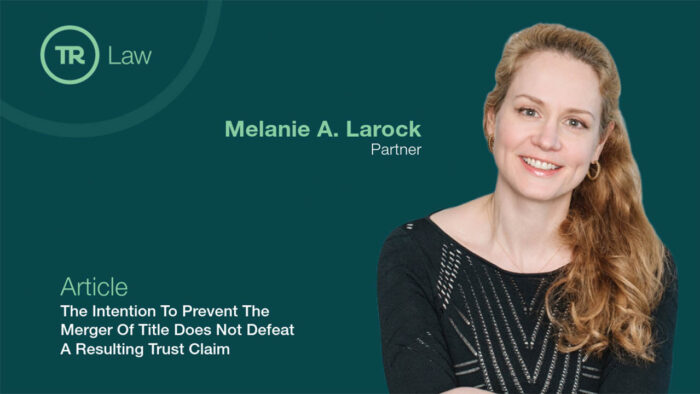Cyclists and Access to Accident Benefits: The Path Toward Payments
May 1, 2011
By: Caroline Meyer
It is an unfortunate story that personal injury lawyers hear all too frequently: a cyclist, navigating the treacherous streets of Toronto, is struck by a motor vehicle.
Facing a long road to recovery, the last thing a cyclist wants to do is traverse the confusing legal landscape of accident benefits.
Issues often arise as to whose insurer ought to pay accident benefits to the cyclist. A cyclist who has his or her own auto insurance policy, or who may be covered under the policy of a family member, may question whether to submit an application for accident benefits to his or her own insurance company, or to the insurer of the involved motor vehicle. A cyclist who potentially may be eligible for coverage by multiple automobile policies may question which insurer has a duty to pay. Further, a cyclist who is involved in an accident involving more than one vehicle may be completely unsure where to claim accident benefits.
Cyclists can breathe easy: in Ontario, it is undisputed that cyclists injured in accidents involving motor vehicles have access to statutory accident benefits. Nevertheless, there is a “priority” system to determine which insurer ought to pay accident benefits to the cyclist.
Cyclist’s Insurer
If the cyclist, the cyclist’s spouse or someone upon whom the cyclist is economically dependent (i.e. a parent):
- owns a motor vehicle;
- leases a vehicle;
- has a rental vehicle with a contract to rent for more than 30 days; or
- drives a company car which was made available for the cyclist’s regular use, then the application should be sent to the insurer for that vehicle.
If more than one of the above scenarios applies, the cyclist can choose to send the application to any of the insurers set out above.
Listed Driver Policy
If the cyclist is not covered by any of the above scenarios, and is a listed driver on another person’s policy, then the cyclist should submit his application to that insurer.
Insurer of Vehicle that Struck Cyclist
If the cyclist is not covered by any of the above scenarios, and is not a listed driver on another person’s policy, then the cyclist should submit his application to the insurer of the motor vehicle that struck him.
Insurer of Vehicle “Involved “
If the motor vehicle that struck the cyclist is not insured, and none of the above scenarios apply, and the cyclist was involved in an accident involving more than one vehicle, the cyclist may submit an application to the insurer of any of the other involved vehicles, regardless of whether those vehicles actually struck the cyclist.
Motor Vehicle Accident Claims Fund
If none of the above apply, then an application for accident benefits should be submitted to the Motor Vehicle Accident Claims Fund (MVACF). The MVACF is the insurer of last resort for cyclists as well as others.
Where a cyclist may potentially have coverage under more than one automobile policy, this should be stated on the application for accident benefits under Part 4 of the Application for Accident Benefits. It is important to note that while a cyclist should do his or her best to fill out the application to the best of his or her ability, the receipt of a completed application for benefits to any automobile insurer who could conceivably respond to the claim triggers an insurer’s obligation to pay benefits.
Under section 2 of Ontario Reg. 283/95, the first insurer that receives a completed application for benefits is obliged to pay the benefits to the cyclist, pending the resolution of any dispute as to which insurer is actually required to pay the benefits. This first insurer may serve a notice on other insurers to dispute its obligation to pay benefits, but most do so within 90 days of receipt of the completed application. Beyond the 90 day mark, the insurer who received the completed application for benefits must continue to pay benefits regardless of any dispute as to the appropriate insurer.
A priority dispute may arise for many reasons. For instance, in Liberty Mutual Insurance Co. v. Zurich Insurance Co., (2007) 88 O.R. (3d) 629, a 13 year old cyclist was struck by a motor vehicle insured by Liberty. Liberty received an application for accident benefits on behalf of the cyclist, listing incorrectly that the cyclist was living with his mother and that the cyclist was not insured. The cyclist was actually living with his father, whose automobile insurer could have been in a position to respond to the claim. The Court nevertheless found that Liberty ought to have determined that the cyclist was living with his father and discovered the insurer within the 90 days. Since Liberty did not do so, Liberty was prohibited from proceeding with the priority dispute.
In Echelon General Insurance Co. v. CGU Insurance Co. of Canada, [2008] O.J. No. 2224, a cyclist was involved in a motor vehicle accident with a vehicle insured by Echelon. An application for accident benefits on behalf of the cyclist was received by Echelon. Echelon conducted its own research and found that the cyclist may have been insured by several different insurers. Some enquiries were made, but Echelon failed to determine that the cyclist’s father was insured by CGU within the 90 day period. Accordingly, the Court concluded that Echelon was the priority insurer.
” …first insurer that receives a completed application for benefits is obliged to pay the benefits to the cyclist.”
What these decisions all speak to is the fact that in accordance with the interpretation of the SABS, the insured person’s rights take precedence. Indeed, numerous decision makers have noted that the policy of “pay now, dispute later” underpins the SABS. In the decision of ING Insurance Co. of Canada v. TD Insurance Meloche Monnex, [2010] O.J. No. 3549, the Ontario Court of Appeal quoted with apparent approval the application judge, who found with respect to the claim for accident benefits that “the regulation seeks to start statutory benefits flowing to entitled claimants as quickly as possible, without awaiting the resolution of priority disputes amongst insurers”.
It is important for injured cyclists to remember that priority disputes are disputes between insurers and should not delay the claimant’s ability to receive benefits to which he/she is entitled under the SABS.
The issue of priority disputes can be infinitely more complicated than the fact scenarios set out in this article and cyclists ought to consult a knowledgeable accident benefits lawyer to navigate the accident benefit path.
Share this








